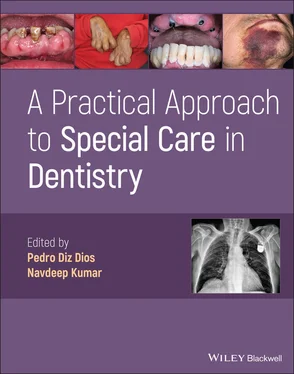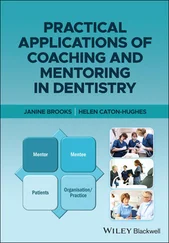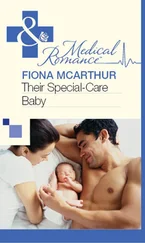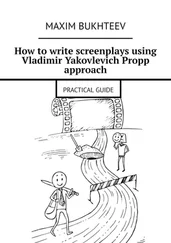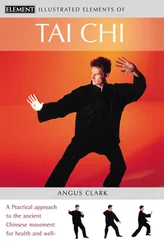A Practical Approach to Special Care in Dentistry
Здесь есть возможность читать онлайн «A Practical Approach to Special Care in Dentistry» — ознакомительный отрывок электронной книги совершенно бесплатно, а после прочтения отрывка купить полную версию. В некоторых случаях можно слушать аудио, скачать через торрент в формате fb2 и присутствует краткое содержание. Жанр: unrecognised, на английском языке. Описание произведения, (предисловие) а так же отзывы посетителей доступны на портале библиотеки ЛибКат.
- Название:A Practical Approach to Special Care in Dentistry
- Автор:
- Жанр:
- Год:неизвестен
- ISBN:нет данных
- Рейтинг книги:3 / 5. Голосов: 1
-
Избранное:Добавить в избранное
- Отзывы:
-
Ваша оценка:
- 60
- 1
- 2
- 3
- 4
- 5
A Practical Approach to Special Care in Dentistry: краткое содержание, описание и аннотация
Предлагаем к чтению аннотацию, описание, краткое содержание или предисловие (зависит от того, что написал сам автор книги «A Practical Approach to Special Care in Dentistry»). Если вы не нашли необходимую информацию о книге — напишите в комментариях, мы постараемся отыскать её.
Learn to treat dental patients with disabilities or who are medically compromised A Practical Approach to Special Care in Dentistry
A Practical Approach to Special Care in Dentistry
A Practical Approach to Special Care in Dentistry — читать онлайн ознакомительный отрывок
Ниже представлен текст книги, разбитый по страницам. Система сохранения места последней прочитанной страницы, позволяет с удобством читать онлайн бесплатно книгу «A Practical Approach to Special Care in Dentistry», без необходимости каждый раз заново искать на чём Вы остановились. Поставьте закладку, и сможете в любой момент перейти на страницу, на которой закончили чтение.
Интервал:
Закладка:
Sensorineural deafness is commonly associated with genetic disorders, trauma, prematurity, infections, tumours, drug ototoxicity, otosclerosis and presbycusis, among others
Clinical Presentation
The symptoms of auditory deficit depend on the cause and level of hearing loss
The presence of comorbidities is in general more common when the auditory deficiency occurs during the prenatal or perinatal stage
Children younger than 4 months do not turn face to noises; at 12 months, they are unable to articulate a single word and only respond when they can see the speaker or when certain sounds are produced
Older children talk in a high voice, continuously interrogate the speaker, and their pronunciation is unclear
Sudden loss of hearing can be a symptom of another disease, such as stroke
Diagnosis
Initial examination with tuning fork and otoscope Figure 3.2.5 Cochlear implants in a child with congenital deafness.
Audiometry (auditory capacity curve that combines intensity and frequency) ( Figure 3.2.4)
Impedance (audiometry of electrical response or otoacoustic emissions)
Tympanometry and measurement of the stapedial reflex
Management
Conductive auditory deficits can generally be treated with drugs or surgery (e.g. drainage, tympanoplasty and stapedectomy)
Sensorineural deafness can be improved with hearing aids and cochlear implants (surgically implanted electrical devices) ( Figure 3.2.5)
Prognosis
The prognosis for deafness depends on its aetiology
Conductive hearing loss usually has a better prognosis than sensorineural, which in some cases is irreversible
Deafness in the elderly usually leads to psychological problems and significantly increases the risk of dementia
A World/Transcultural View
The prevalence of hearing impairment in children and adults is substantially higher in low‐ to medium‐income countries than in high‐income countries; the regions with the highest prevalence of hearing impairment are southern Asia, sub‐Saharan Africa, Central/Eastern Europe and Central Asia
A significant percentage of cases of non‐syndromic deafness have a genetic origin; a number of mutations (especially in the GJB2 gene) are common in Middle Eastern countries, where carriers belonging to numerous ethnic groups have been identified
Recommended Reading
1 Alsmark, S.S., García, J., Martínez, M.R., and López, N.E. (2007). How to improve communication with deaf children in the dental clinic. Med. Oral Patol. Oral Cir. Bucal 12: E576–E581.
2 Ávila‐Curiel, B.X., Solórzano‐Mata, C.J., Avendaño‐Martínez, J.A. et al. (2019). Playful educational intervention for improvement of oral health in children with hearing impairment. Int. J. Clin. Pediatr. Dent. 12: 491–493.
3 Bimstein, E., Jerrell, R.G., Weaver, J.P., and Dailey, L. (2014). Oral characteristics of children with visual or auditory impairments. Pediatr. Dent. 36: 336–341.
4 Champion, J. and Holt, R. (2000). Dental care for children and young people who have a hearing impairment. Br. Dent. J. 189: 155–159.
5 Roberts, S., West, L.A., Liewehr, F.R. et al. (2002). Impact of dental devices on cochlear implants. J. Endod. 28: 40–43.
6 Shetty, V., Kumar, J., and Hegde, A. (2014). Breaking the sound barrier: oral health education for children with hearing impairment. Spec. Care Dentist. 34: 131–137.
7 Suhani, R.D., Suhani, M.F., and Badea, M.E. (2016). Dental anxiety and fear among a young population with hearing impairment. Clujul Med. 89: 143–149.
8 Wilson, B.S., Tucci, D.L., Merson, M.H., and O'Donoghue, G.M. (2017). Global hearing health care: new findings and perspectives. Lancet 390: 2503–2515.
4 Infectious Diseases 4.1 Tuberculosis
Section I: Clinical Scenario and Dental Considerations
Clinical Scenario
A 43‐year‐old male presents to the dental clinic complaining of generalised pain in his mouth of several years' duration. He reports that the pain makes eating very difficult and feels that this is linked to his weight loss in the past year. You note that the patient is unable to communicate clearly and appears intoxicated.
Medical History
Tuberculosis diagnosed at the age of 18 years of age – completed 8 months of drug therapy with pharmacological cure criteria achieved
Pulmonary mycetoma diagnosed 1 year earlier (pending surgery, which the patient has deferred on several occasions)
Tuberculous reinfection 4 months earlier (has been undergoing drug therapy since then)
Post‐trauma cataract in the right eye
Asthma
Depression/low mood
Constitutional syndrome (including malaise, fatigue, anorexia, weight loss) with protein‐calorie malnutrition
Medications
Isoniazid and rifampicin
Tiotropium bromide
Budesonide/formoterol
Folic acid
Lorazepam
Dental History
Irregular attender as generally feels too tired to go out of the house
Last visit many years ago
Reports good co‐operation in the past
Does not brushing his teeth regularly
Social History
Married but separated and now lives with his mother
Unemployed/unable to work due to poor general health
Minimal financial resources
Tobacco consumption: 20 cigarettes/day since his adolescence
History of excess alcohol consumption (stopped consuming alcohol 5 years ago)
Intermittent use of recreational drugs; his wife, whom he sees occasionally, has drug addiction problems
Oral Examination
Neglected dentition, with numerous caries and severe periodontal disease
Fixed prosthesis in the aesthetic zone #13–23
Caries in #16, #24 and #27
Missing teeth: #11, #12, #14, #15, #21, #22, #36, #37 and #46
Muscles of mastication tender on palpation
Radiological Examination
Orthopantomogram undertaken as the patient is unable to tolerate intraoral radiographs ( Figure 4.1.1)
Generalised alveolar bone loss demonstrated
Caries in #16, #23, #24, #25, #26 and #27
Structured Learning
1 Is it likely that the patient's tuberculosis was active a year ago and led to the development of the pulmonary mycetoma?It is more likely that the patient had latent tuberculosis rather than active tuberculosis disease when the mycetoma was diagnosedA pulmonary mycetoma is a chronic, progressively infectious disease which can occur within a pulmonary cavity that is usually generated during the previous episode of active tuberculosis Figure 4.1.1 Orthopantomogram showing multiple caries and alveolar bone loss.It consists primarily of fungi, especially of the genus Aspergillus
2 What risk factors does this patient have for the development of tuberculosis?The use of recreational drugs is known to increase the risk of contracting tuberculosis, whether or not the individual has HIVThis has been linked to the sharing of drug equipment, such as marijuana water pipes
3 What factors could be contributing to the patient's oral symptoms?Poor oral health/recurrent dental infectionsTemporomandibular dysfunctionDepression/atypical facial painChronic pain associated with constitutional syndrome
4 The patient requests that all his remaining teeth are removed and dental implants are placed so that he can eat properly and gain weight. What factors should you consider when assessing the risk of managing this patient?SocialUnrealistic expectations – the weight loss may be due to other factors, including the constitutional syndrome; orofacial pain may not be related to dental healthImpaired capacity due to apparent intoxication – this may be linked to use of recreational drugs; unable to give informed consent, needs to be assessed at each visitLimited commitment to attend the dental clinic/hospital and follow‐upLimited financial meansMedicalFrail, malnourished patient with probable impaired wound healingRecurrent tuberculosisImpaired respiratory function: tuberculosis, mycetoma, asthmaPotential side‐effects of antituberculosis medication (infection/bleeding risk)Visual impairment due to the cataract and potential blurred vision with tiotropiumDentalNeglected mouth/poor commitment to maintaining oral healthActive smokingHyposalivation caused by tiotropium
Читать дальшеИнтервал:
Закладка:
Похожие книги на «A Practical Approach to Special Care in Dentistry»
Представляем Вашему вниманию похожие книги на «A Practical Approach to Special Care in Dentistry» списком для выбора. Мы отобрали схожую по названию и смыслу литературу в надежде предоставить читателям больше вариантов отыскать новые, интересные, ещё непрочитанные произведения.
Обсуждение, отзывы о книге «A Practical Approach to Special Care in Dentistry» и просто собственные мнения читателей. Оставьте ваши комментарии, напишите, что Вы думаете о произведении, его смысле или главных героях. Укажите что конкретно понравилось, а что нет, и почему Вы так считаете.
